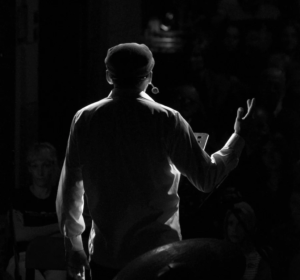By Richard Tardif
Walking around barefooted may be just what you need to strengthen the small muscles in the feet and ankles and reconnect to your natural core and while shoeless training is not new, more people are seeking relief of pain and inflammation with their feet firmly planted on the ground.
“Barefoot training is an awakening of our small nerves and sensor capabilities we have in the soles of our feet as well as the intrinsic muscles,” says Farrell Kaufman, Barefoot Training Specialist and Master Instructor.

“By returning to our bare feet we can absorb the ground properly, be more stable, use our energy efficiently and reduce pain.”
Barefoot training is not to be confused with minimalist, or using designer footwear with less cushioning, something runners have popularized. Your feet are in the buff. Nevertheless, integrating barefoot training should be slow and transitional.
“In barefoot training we learn to stabilize ourselves,” says Kaufman. “Once we have gained strength, everything travels through our core and that is when we reconnect.”
Our feet are covered with sensors, called Proprioceptors, providing feedback about body position, alignment, stability then strength. Barefooted training proponents believe when your feet engage freely with the floor greater muscle activation occurs and works its way up the muscle chain. The results; reduced body pain, an increase in quality of life and more power in sports.
Think about the foot and ankle, an intricate connection of 26 bones, with 33 joints and corresponding muscles, tendons and ligaments working together. It’s not surprising that any decrease in strength, mobility, or sensing abilities in your foot could impact your leg, your hip, your pelvis, and to your spine.
“People learn quickly what their feet are responsible for and this quickly turns on a light,” says Kaufman.
“I hear about pain people have and why they stopped playing their favourite sport. From here we work on taking care of the connective tissues, mobilize areas that require it; turn off overactive muscles and activate muscles.”
You can workout in the weight room barefooted, but caution is warranted, given that falling dumbbells and other equipment can cause serious injury to the foot. It is also recommended before beginning barefoot training get a Barefoot Assessment from a specialist to understand what issues may be present to avoid injury.
For an assessment contact Farrell Kaufman at farrell.kaufman@gmail.com. Watch a video by Farrell, click video.






